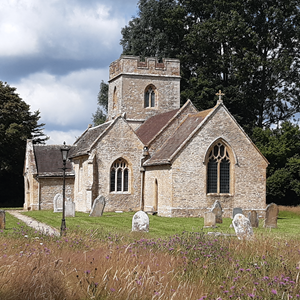Holnest
About Holnest
_______________________________
Holnest is a small parish, a scattered village originally within the ancient White Hart Forest, situated either side of the A352 and about 5 miles south east from Sherborne.
In the Blackmore Vale, sited on Oxford clay which is drained by a small stream called The Cam. Starting in the north and going clockwise it is adjacent to the parishes of Longburton, Folke, Holwell, Wooton Glanville, Minterne Magna, Hermitage, Leigh and Lillington. The parish church is the ancient church of St Mary, which contains seating just for 74 persons.
See Dorset Online Parish Clerk for further details - Dorset OPC - Holnest
_______________________________
Holnest & Lillington & Leweston
Population 401 persons in 110 households.
(Source: Nov. 2021 Dorset Council - Insights. Due to low numbers, the data for these parishes have been combined.)
_______________________________
Holnest (copse or wooded hill where holly grows) comes from the Old English holeyn + hurst. References include Holeherst (1185), Holenherst (1268), Holnest (1316) and Holnhurst (1375).
In 1195 it was named Holehurst until 1316 when it became Holenhurst and later still Holnest. The name probably derived from the old English word Holynhurst meaning holly tree or wood. It is first mentioned in the reign of Henry VIII (1509 - 1547) when in 1552 it was leased to Sir Walter Raleigh and was part of the Sherborne estate.
The Grade 1 13th century church, dedicated to St Mary, and the adjacent farmhouse, originally a hunting lodge to the White Hart Forest, are the only remaining buildings of the old Holnest village, the rest being destroyed after the Black Death. Holnest has a Grade 2 mansion house.
Current industries are farming and horticulture but in former times a brick works and sawmills were part of the then Holnest estate.
_______________________________
St Mary's Church
The church, dedicated to the Assumption of the Blessed Virgin, dates largely to the 14th and 15th centuries. Largely left untouched by the Victorian restorers, it contains a number of interesting features, including a Jacobean pulpit, rare examples of Georgian box pews with curved candle sconces above, an original medieval barrel-vaulted roof in the south aisle.
_______________________________
In the churchyard was a mausoleum erected to the memory of J S W Sawbridge-Erle-Drax. This family owned Holnest Park and were the principal landowners in the parish. In the grounds of Holnest Park was a nine foot high statue of the above gentleman commemorated in the mausoleum.
_______________________________
Church
Church of the Assumption of the Blessed Virgin Mary, Holnest.
Website: Holnest Church (Three Vallets Benefice)
Friends of Holnest Church: https://friendsofholnestchurch
________________________________
Listed Buildings
There is 1 x Grade I listed building (Church of the Assumption) and 10 x Grade II buildings.
British Listed Buildings website: British Listed Buildings - Holnest
________________________________


